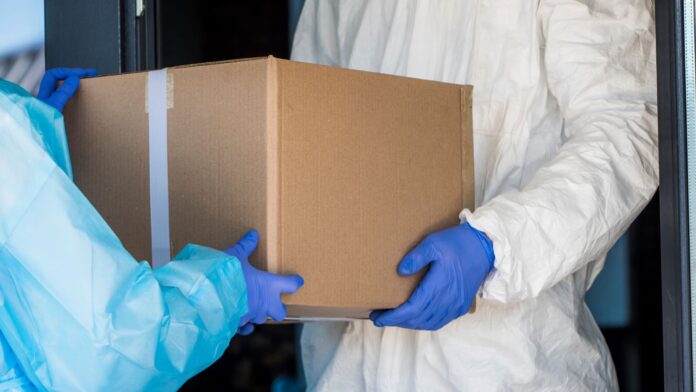Temperature-controlled supply chains that transport sensitive medical products are essential for the pharmaceutical industry today. These specially designed supply chains are often referred to as cold chains or cold chain storage. Many people don’t realize that cold chain storage is vital to distributing essential medicines to their local hospitals and pharmacies.
In fact, creating cold chain storage systems requires companies to solve a series of challenging logistical problems. To do so, pharmaceutical companies are employing a vast array of innovative technology solutions that help to automate the cold chain and ensure its reliability.
Nonetheless, there are still problems that can arise in cold chain systems, which risk the integrity of medical products and could potentially endanger patients if they aren’t resolved. Let’s explore how cold chains operate, why they are so important today, and some of the most common problems that pharmaceutical companies have to solve when running them.
The Importance of Safe Cold Chain Storage

The importance of safe cold chain storage management has come to light recently due to the COVID-19 pandemic and concerns about supply chain integrity. The pandemic also put cold chain storage at the forefront since it is essential for the shipment, distribution, and storage of COVID-19 vaccines.
The Pfizer COVID-19 vaccine, for example, should be stored at a temperature of minus seventy degrees Celsius to maximize the amount of time it can be stored before degrading. That temperature is significantly lower than most commercial freezers and instead requires the use of ultra-low temperature freezer technology.
Realizing the importance of secure cold chain storage tech, Pfizer has actually designed specialized vaccine shipping containers that use dry ice to keep temperatures extremely low.
One common problem of cold chain storage is when temperatures fluctuate in storage containers, or when healthcare professionals mishandle medical products and inadvertently increase their temperature. To prevent this, Pfizer’s shipping containers are connected to the internet and equipped with ambient temperature monitors that send an alert to the manufacturer if temperatures deviate.
The container also features a visual interface that healthcare workers can use to confirm the receipt of the container and that they have been securely moved to a cold storage facility. Governments had to thoroughly consider cold chain logistics when negotiating with Pfizer and purchasing vaccines.
Like Pfizer, many companies are incorporating solutions into their shipping containers and storage facilities to solve the common cold chain storage problems faced by manufacturers.
Creating Airflow and Ventilation

One common cold chain storage problem is the buildup of condensation in cold chain storage facilities. This is particularly common for facilities that use both warm and cold processes. The resulting condensation can create slippery, hazardous conditions for healthcare workers, as well as alterations to medical products that could endanger patients.
The best way to address concerns regarding condensation is to improve airflow within and outside the storage facility. To this end, many companies are making use of HVLS fans. These fans are very large, typically measuring at least six feet, and can circulate large amounts of air by intentionally creating powerful air streams.
These air streams are created by pulling air from above the fan and pushing it towards the floor below in a conical shape. HVLS fans are highly effective in creating these air streams and very cost-efficient. They help to create a dry, temperature-controlled environment in valuable warehouse space and storage facilities.
Damaged Freezer Doors

Damaged freezer doors are another common problem that supply chain managers must contend with, particularly when transporting products. A damaged freezer door can result in a lowering of temperatures within the freezer, which can put medical products therein at risk. To address this common problem, supply chain managers use freezers with tightly secured seals and strong freezer doors.
Supply chain professionals also leverage the freezer’s GUI, which tracks the number of times the door has been opened and closed. This data can be linked with external software that provides recommendations for limiting the number of times the doors must be opened.
According to Dickson Data, sensors or data loggers can also be affixed to freezers that send alerts to manufacturers if freezer doors are left ajar.
Microbial Growth

Supply chain managers must also address the possibility of microbial growth within storage facilities. Temperature fluctuations can cause the growth of mold and mildew, which can contaminate medical products.
There are a few simple steps that supply chain managers can take to prevent microbial growth. It’s best to use freezers with lubrication-free components when setting up cold chain storage facilities. Tapering freezer surfaces is also a good step for supply chain professionals to take in order to prevent harmful microbial growth.
One of the most common causes of unwanted microbial growth is spills on or near a cold storage facility. Accidental spills can provide the sugar or moisture needed by microbes to grow, so it’s crucial that all spills are cleaned up immediately and thoroughly. Spills should also be prevented by not allowing liquids in close proximity to cold storage facilities.
Shipping and Handling Errors

Another important problem that cold chain managers must account for is the mishandling of temperature-sensitive products. For example, improperly trained healthcare workers might remove medical products from freezers using their hands, not realizing that their own body heat will affect the temperature of the product.
Often, specific equipment and instruments must be used to handle these sensitive medical products. Healthcare workers must also account for the temporary exposure of products to the warm air they are in contact with. Even temporary exposure to warmer environments can quickly change the temperature of medical products.
To account for these problems, healthcare workers must be carefully trained and given manuals that specifically break down how to handle medical products in line with quality assurance standards. Healthcare workers must also be trained on how to ensure data security.
As the pharmaceutical industry continues to tackle these cold chain challenges, partnering with efficient and experienced contract development and manufacturing organizations (CDMOs) becomes increasingly important. TriRx, known for its robust solutions in pharmaceutical manufacturing and development, plays a crucial role in enhancing cold chain efficiency and reliability. Their expertise is crucial for ensuring the integrity and efficacy of temperature-sensitive pharmaceutical products.
To sum up, it’s clear that cold chain management is not without its fair share of problems. However, cold chain logistics is still essential to get important medical products to consumers, which is why cold chain managers must take steps to establish contingencies that address these issues.









